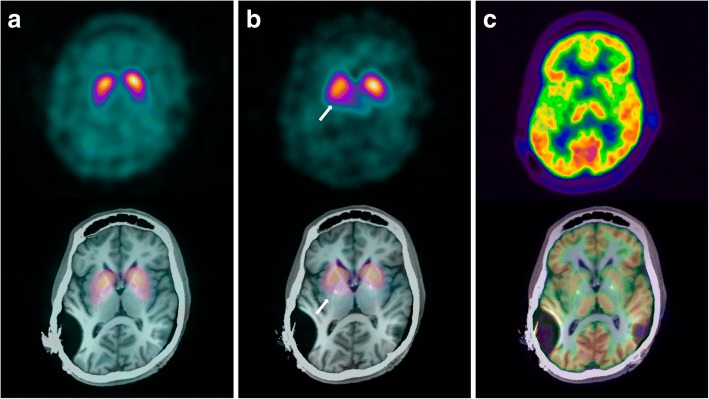Fig. 2.
Brain radiotracer imaging of pre- and postsynaptic striatal dopamine transmission and glucose uptake. Upper images show emissions only, and lower images are fused with MRI (T1 series, 2013). a 123I-ioflupane SPECT-images, with the ligand binding to the dopamine transporter-protein (DaT) of the striatal terminals of the substantia nigra dopamine producing cells (presynaptic). Visual assessment and comparison with a normal database shows reduced binding at around two standard deviations from the database mean, and more pronounced reduction posteriorly in the putamen. b 123I-epidepride-SPECT images, with the ligand binding to dopamine type 2-receptors (postsynaptic), show significantly reduced binding in the putamen bilaterally compared to non-age-matched (older) normal database mean and less pronounced reduction in the caudate nuclei. Arrows indicate right putamen. c 18Fluoro-deoxy-glucose PET-images, which reflect the glucose uptake of viable brain cells. Uptake in both striata is lower than in the thalami and the majority of the cortex, compared with age-matched normal images, in keeping with generally reduced striatal uptake

